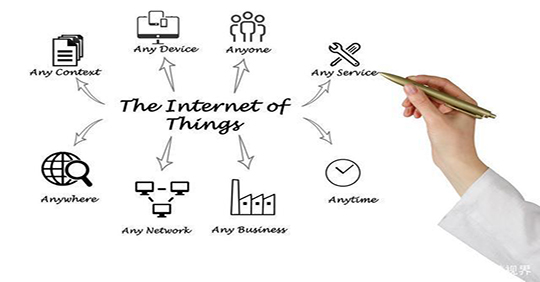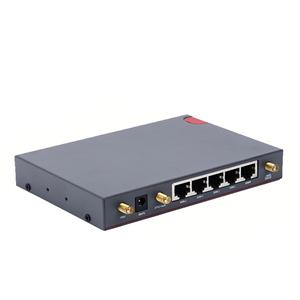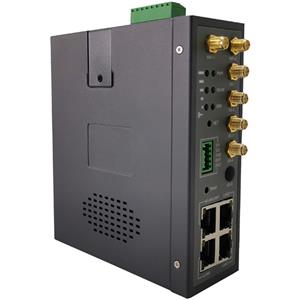The next development of the Internet of Things
The next development of the Internet of Things

The Internet of Things (IOT) is actively shaping the world of industrial production and consumption. From retail to healthcare, from finance to logistics, smart technology has spread to every business and consumer area. 2020 will affect all four components of the IoT model: sensors, networks (communications), analytics (cloud), and applications, and will have varying degrees of impact. The following 10 trends explore the impact of many technologies on the Internet of Things and predict the next development of the Internet of Things.
Trend 1: Increased data and devices with enhanced human-computer interaction By the end of 2019, approximately 3.6 billion devices will be actively connected to the Internet and used for daily tasks. With the introduction of 5G, it will open the door for more devices and data traffic.
Trend 2: Artificial intelligence has once again become an important player in the Internet of Things To fully utilize data, computer assistance is needed through artificial intelligence. Artificial intelligence is an essential element for understanding the vast amount of data collected and increasing its business value. Artificial intelligence will help IoT data analysis in the following areas: data preparation, data discovery, visualization of streaming data, time series accuracy of data, prediction and advanced analysis, and real-time geospatial and location (logistics data). Major cloud vendors including Amazon, Microsoft and Google increasingly want to compete based on their AI capabilities. Various startups hope to enable enterprises to extract more value from the growing amount of data through AI algorithms that can use machine learning and deep learning.
Trend 3: VUI: Voice user interfaces will become a reality. Voice accounts for 80% of our daily communication. Just like in science fiction movies, talking with robots should be a common way of communication, such as R2D2, C-3PO and Jarvis. The use of voice in setting devices, changing settings, issuing commands, and receiving results is common not only in smart houses, factories, but also among devices such as cars, wearables, and the like.
Trend 4: More investment in the Internet of Things. The Internet of Things is one of the few markets where emerging and traditional venture capitalists are interested. The proliferation of smart devices and the increasing reliance of customers on them for many daily tasks will increase interest in investing in IoT startups. Customers will wait for the next major innovation of the Internet of Things, such as a smart mirror that can analyze your face, if you are sick, you can call your doctor; a smart ATM machine that will integrate a smart surveillance camera; can tell you how Smart fork for eating and eating. What to eat, and smart beds that turn off the lights when everyone is sleeping. ,
The undisputed impact of the Internet of Things has and will continue to attract more startup venture capitalists to invest in highly innovative projects in hardware, software and services. By 2021, IoT spending will reach $ 1.4 trillion.
Trend 5: Finally, the true extension of the smart IoT is about connectivity and processing. There is no better example than a smart city. The surrounding smart sensors will record all information, including walking routes, shared car use, buildings Material occupation, sewage flow and temperature are selected 24/7, the purpose is to create a comfortable, convenient, safe and clean place for people living there. Once the model is complete, it may become a model for other smart communities and even smart cities.
Cities of all sizes are exploring how the Internet of Things can bring greater efficiency and security, and this infrastructure is being rolled out across the globe. Transportation will likely lead this change, as it turns out that bringing connectivity, intelligence and automation technology to roads and public transportation will greatly improve efficiency and experience. 5G is expected to play a role in the development of smart cities.
Another area of development for the Smart Internet of Things is the automotive industry. Self-driving cars will become the norm in the next few years. Today, thousands of cars have connected applications that display diagnostic information about the car. This is done through the Internet of Things technology, which is the core of the connected car. Diagnostic information is not the only IoT development we will see. Connected apps, voice search and other traffic information and other information will change the way we drive.
Trend 6: The rise of the Industrial Internet of Things and digital twin technologies. Another increasingly popular concept is "digital twins" technology. By using it, organizations can clearly understand how their IoT devices interact with the manufacturing process. This gives keen businesses insight into how their machine's lifecycle works and enables them to anticipate changes that may be needed in advance. According to a Gartner survey, 48% of smart manufacturing adopters have plans to use the digital twin concept.
Trend 7: Move more to the edge. Edge computing is a technology that distributes the processing load and moves it closer to the edge of the network (sensors in the case of IoT). Allows users to minimize latency, save network bandwidth, run reliably through fast decisions, collect and protect large amounts of data, and move data to the best location for processing through better analysis and understanding of local data [1]. In recent years, edge computing has been growing, but the expanding range of IoT technologies will make this move even more apparent. Two factors are contributing to this change: Powerful edge devices of all sizes are becoming cheaper and centralized infrastructures are increasingly under pressure.
Edge computing also makes AI on devices a reality, as it allows companies to leverage real-time data sets without having to screen terabytes of data in a centralized cloud in real time. In the next few decades, technology may shift to a balance between the cloud and more distributed, edge-powered devices.
Trend 8: The Internet of Things focuses on the security of using blockchain. As complex security challenges continue to emerge, the IoT technology market will refocus on security. These complications stem from the diversity and distributed nature of technology. The number of Internet-connected devices has exceeded the 26 billion mark. Hacking of devices and IoT networks will become commonplace in 2020. The current centralized architecture of the Internet of Things is one of the main reasons for the vulnerability of the Internet of Things. The Internet of Things is the main target of connected network attacks, with billions of devices connected and more added, which makes security extremely important.
Blockchain provides new hope for IoT security. First, the blockchain is public. Although users can still use private keys to control transactions, everyone participating in the blockchain network node network can see the stored blocks and transactions and approve them. Second, the blockchain is decentralized, so no single institution can approve transactions, thereby eliminating a single point of failure (SPOF) vulnerability. Third, and most importantly, it is secure-the database can only be expanded, and previous records cannot be changed. It can be expected that in the next few years, manufacturers will recognize the benefits of embedding blockchain technology in all devices and compete for labels such as "blockchain certification".
Trend 9: More social, legal and ethical issues. IoT devices represent a new technology that is not regulated. The Internet of Things will inevitably face social and legal issues in the near future. This is particularly relevant to the data collected by these devices, which may soon find themselves falling under the protection of the General Data Protection Regulation (GDPR). The GDPR extends the scope of this regulation on the processing of personal data and privacy in the European Union beyond the European region. Any business that wants to operate successfully in the European Union must adhere to the guidelines set out in its 88-page document. When it comes to laws and regulations on personal data, security issues are paramount.
Trend 10: Standardization remains a problem. Standardization is one of the biggest challenges facing the development of the Internet of Things. This is a struggle between industry leaders who want to dominate the Internet of Things market at an early stage. However, we are facing fragmented situations. One possible solution is to let a limited number of vendors dominate the market, let customers choose one and insist on using it to connect to any other connected device, similar to our operating system.




